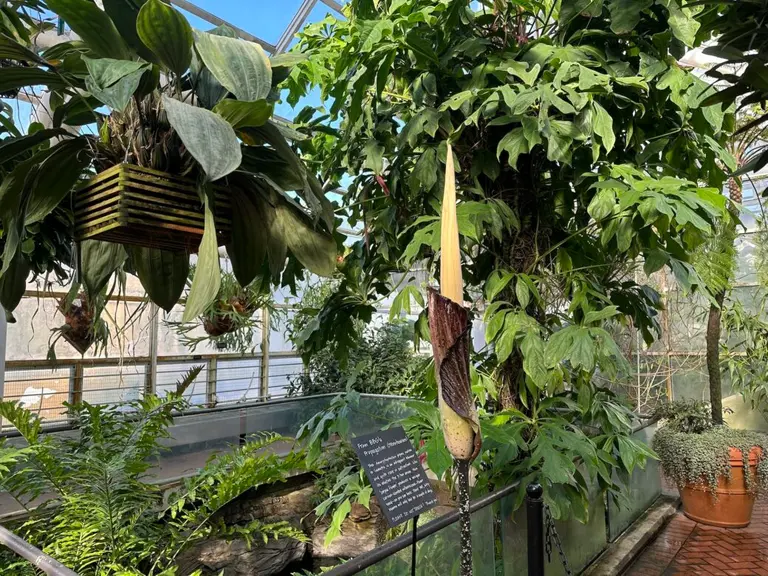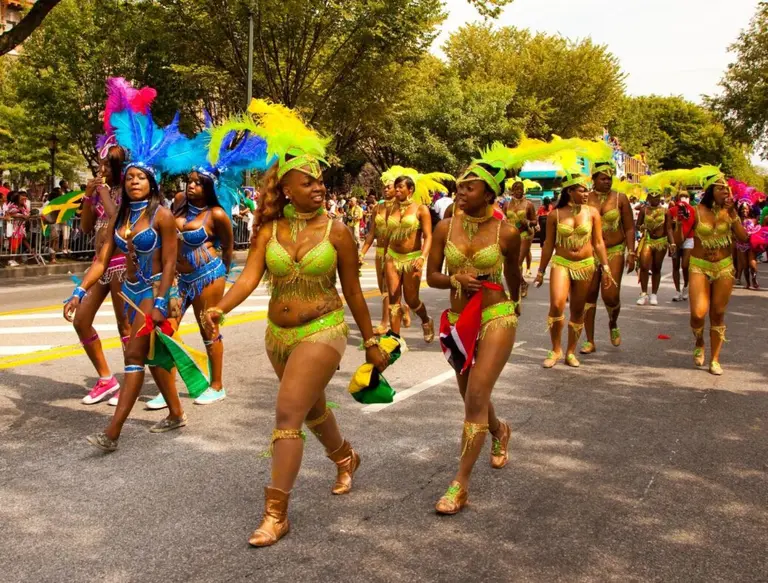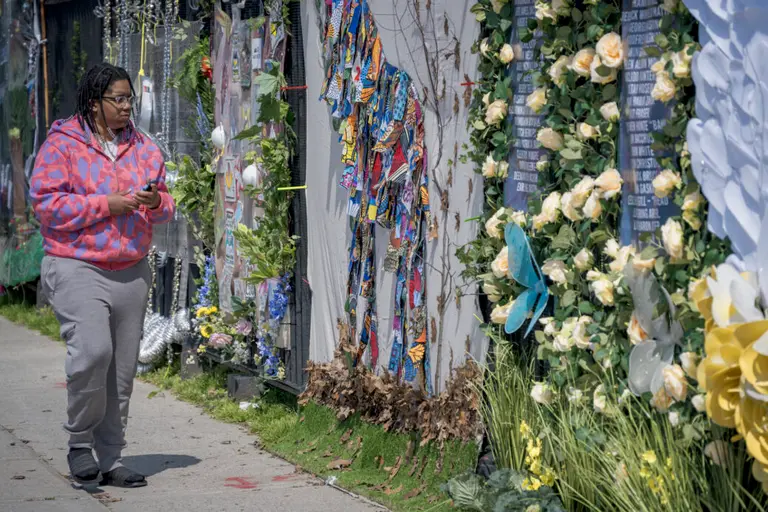Art collection of Alicia Keys and Swizz Beatz will be on view at the Brooklyn Museum
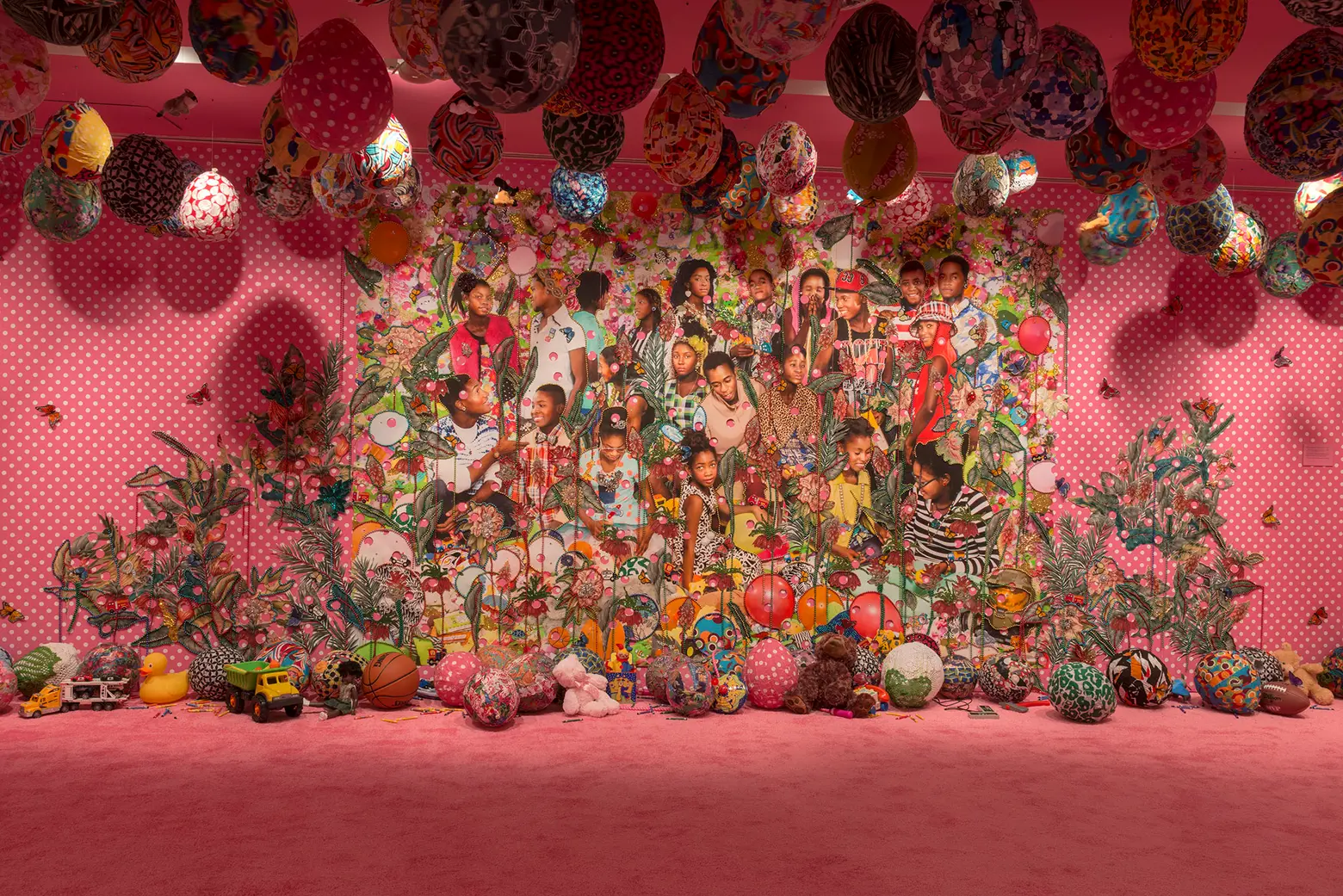
Ebony G. Patterson (born Kingston, Jamaica, 1981). . . . they were just hanging out . . . you know . . . talking about . . . ( . . . when they grow up . . .), 2016. Beads, appliqués, fabric, glitter, buttons, costume jewelry, trimming, rhinestones, glue, digital prints, 90 × 224 in. (228.6 × 569 cm). The Dean Collection, courtesy of Swizz Beatz and Alicia Keys. © Ebony G. Patterson. Courtesy of the artist, Monique Meloche Gallery, and the Studio Museum in Harlem. (Photo: Adam Reich)
Next month you’ll be able to view a world-class selection of artworks from the personal collection of Alicia Keys and Swizz Beatz at the Brooklyn Museum. The exhibition, called “Giants: Art from the Dean Collection of Swizz Beatz and Alicia Keys,” features more than 100 major artworks from world-renowned Black American, African, and African diasporic artists, including Gordon Parks, Kehinde Wiley, Esther Mahlangu, Barkley L. Hendricks, Lorna Simpson, and more. “Giants” will be on view at the Brooklyn Museum from February 10 through July 7.
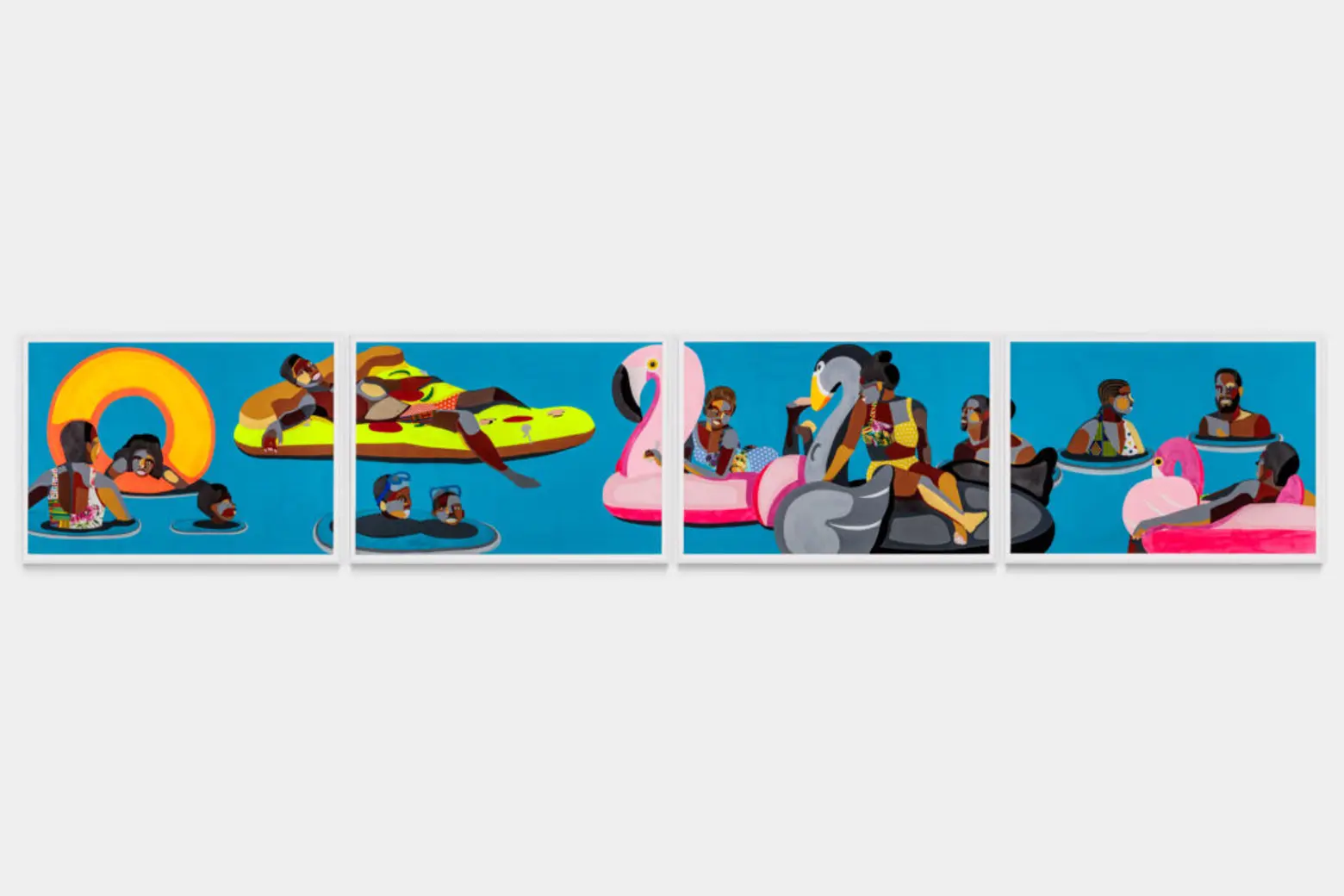
“Swizz Beatz and Alicia Keys have been among the most vocal advocates for Black creatives to support Black artists through their collecting, advocacy, and partnerships. In the process, they have created one of the most important collections of contemporary art,” Anne Pasternak, the Shelby White and Leon Levy Director at the Brooklyn Museum, said.
The exhibition begins by diving into the careers of Alicia Keys and Swizz Beats and their sources of creative inspiration. The artists are both New York City natives and collected art for more than two decades, with a focus on supporting living artists and artists of color.
Alicia Keys, perhaps best known by New Yorkers for her collaboration with Jay-Z on “Empire State of Mind,” is a 15-time Grammy award-winning artist who signed with Columbia Records at the age of just 16 and released her hit debut album when she was 20. Swizz Beatz, whose real name is Kasseem Dean, began his career working as a DJ and went on to be a performer and producer for his family’s record label Ruff Ryders.
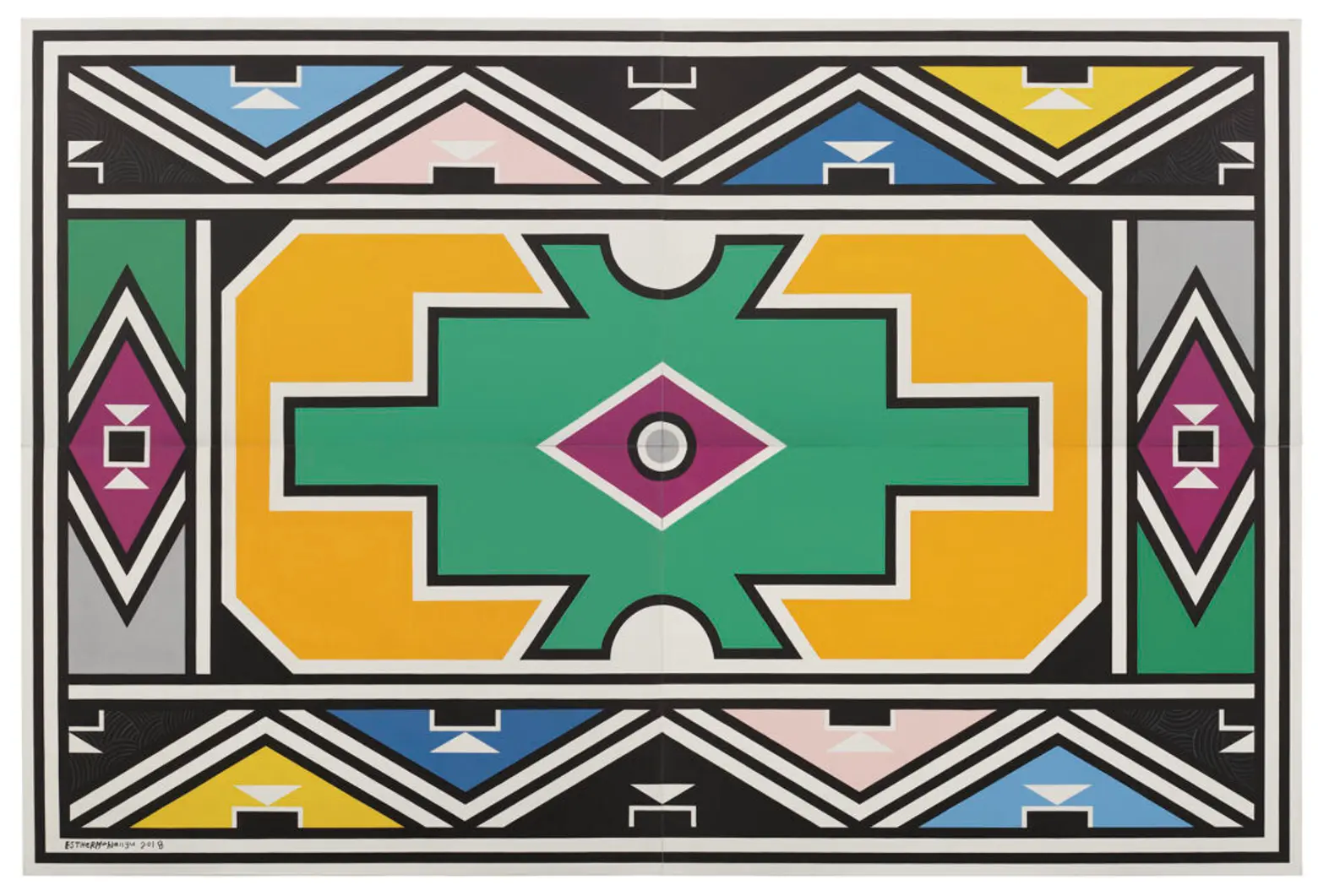
The title “Giants” reflects the legends featured in the show, the impact of “canon-expanding contemporary artists,” and the monumental works of artists like Derrick Adams, Arthur Jafa, and Meleko Mokgosi. In addition to illustrating the connections between multigenerational Black artists, the exhibition is meant to inspire “giant conversations” that reflect on society and celebrate Blackness.
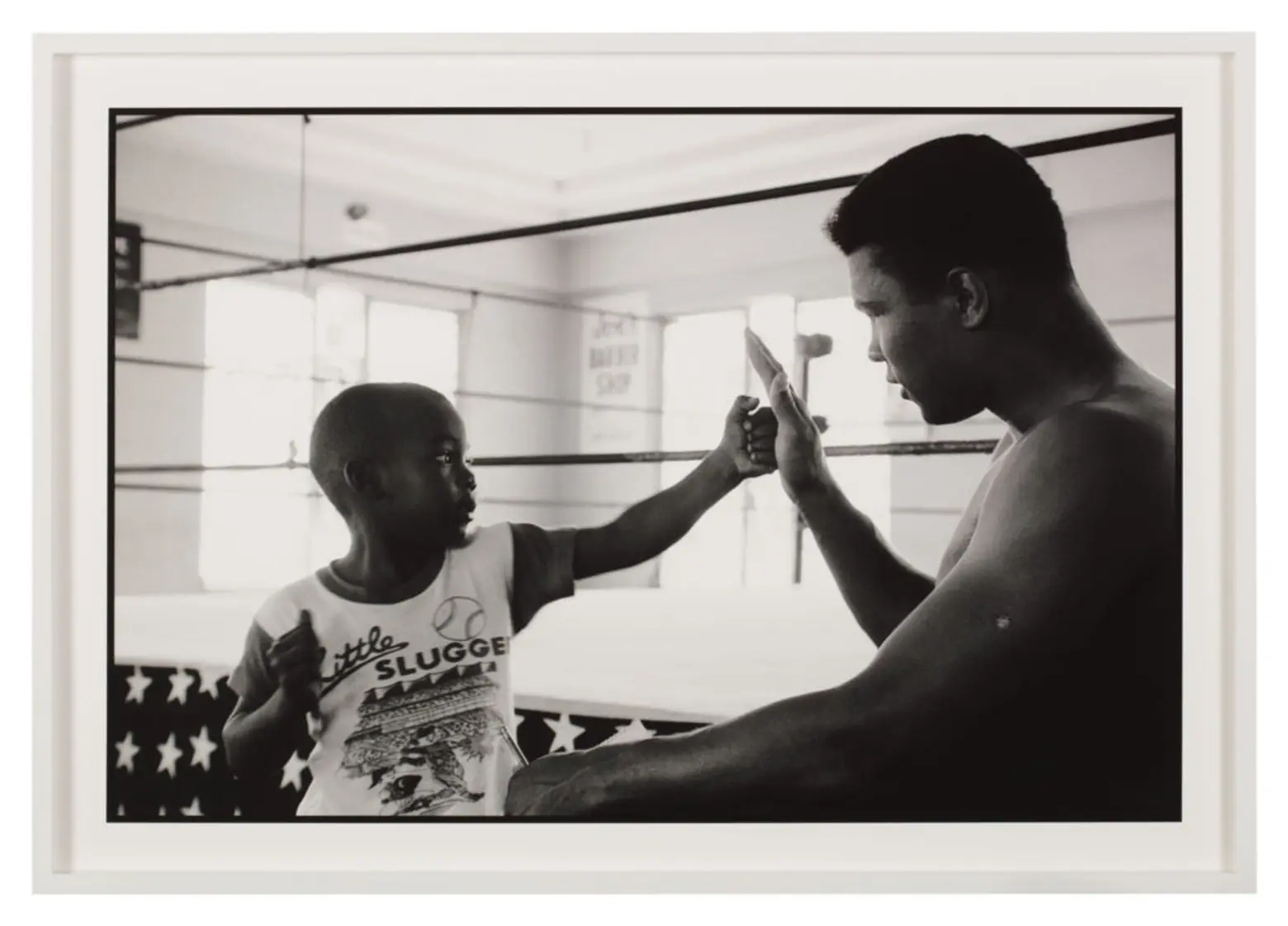
The exhibition’s “On the Shoulders of Giants” section features the work of artists who have left a profound mark on the world. This section includes the work of Esther Mahlangu, who has reimagined the tradition of South African Ndebele house painting through her large, colorful abstract paintings, and portrait and street photography by Kwame Brathwaite, Malick Sidibé, and Gordon Parks. Keys and Dean own the world’s largest collection of Parks’ works.
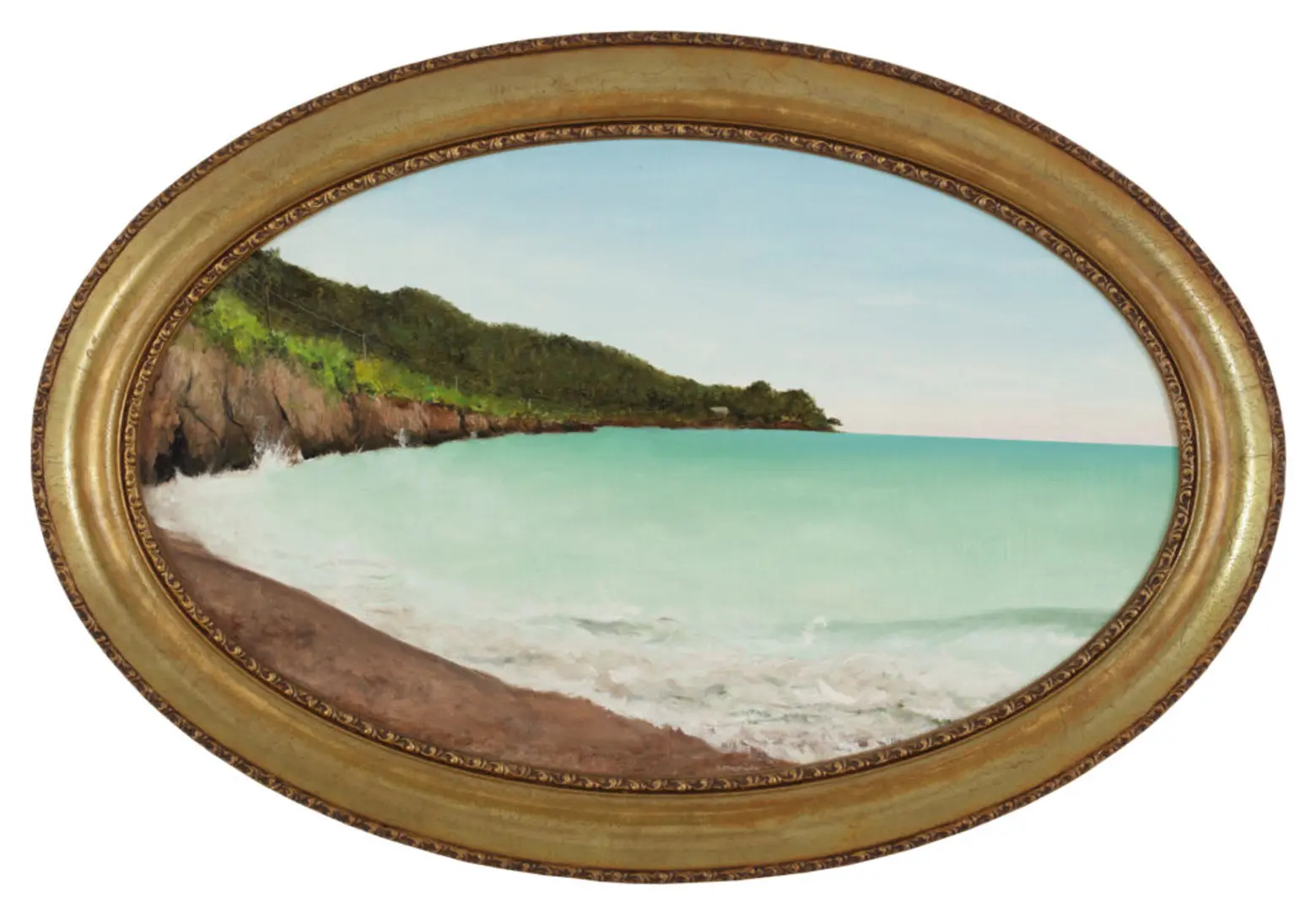
The artwork featured in “Giant Conversations” delves into the ways artists have always spoken out and commented on the world around them. The artists on view address a variety of issues Black people have faced throughout the 20th and 21st centuries. Lorna Simpson’s “Tense” illustrates a Black woman’s self-representation in a society that often attempts to define that representation.

Nick Cave’s textured sculptures analyze how Black people, specifically Black men, must wear “costumes” to protect themselves from violence. The work of other artists, including Jerome Lagarrigue and Henry Taylor, depicts issues of protest and a lack of visibility due to homelessness.
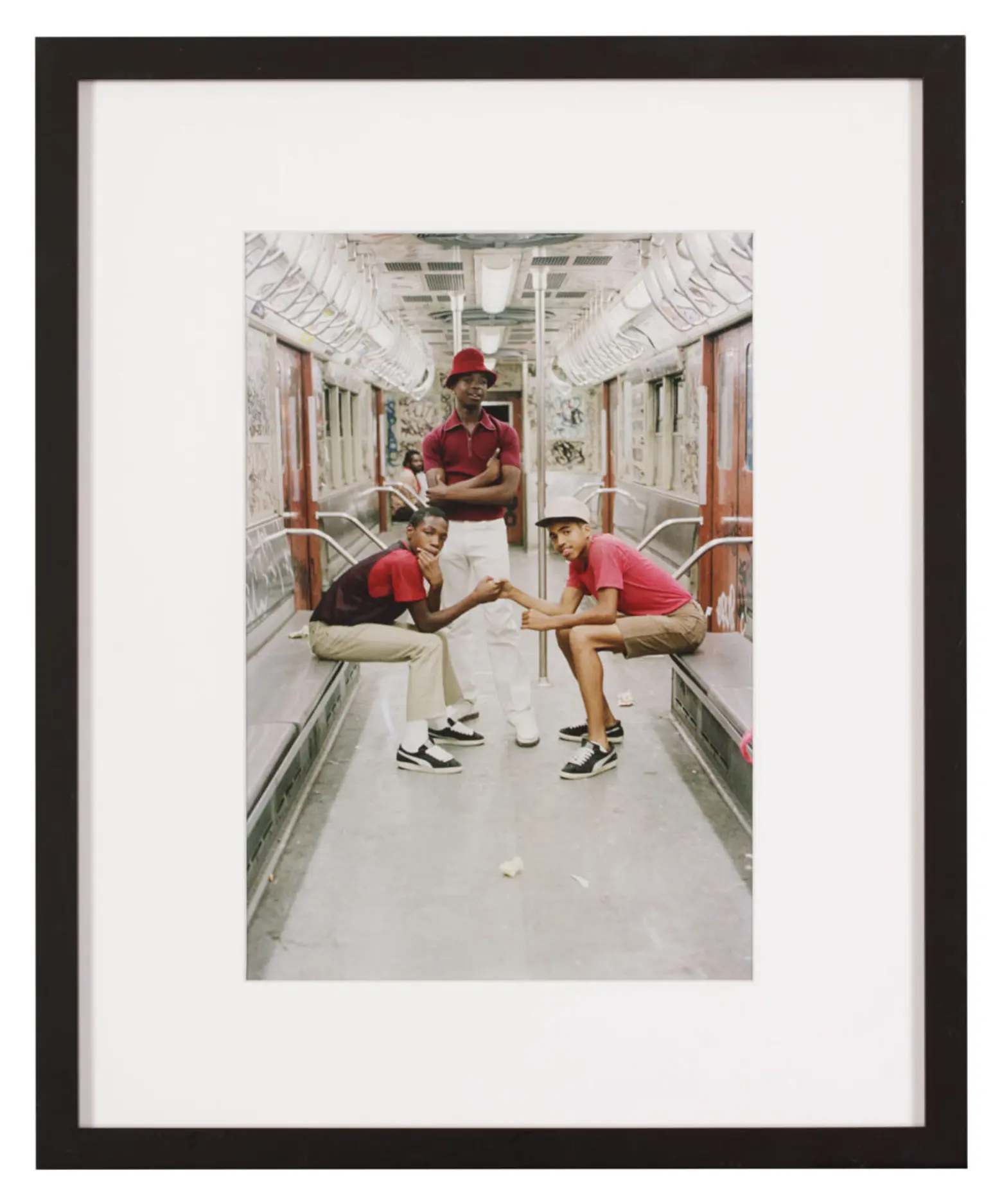
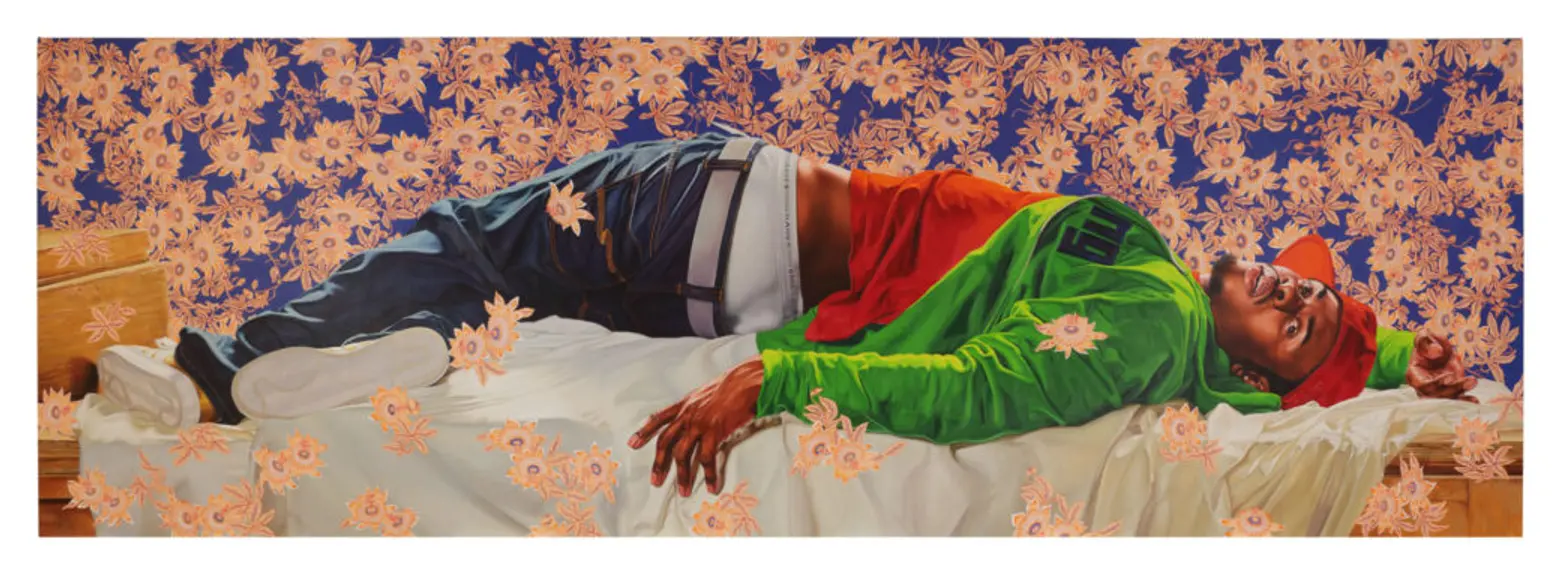
The curated works also celebrate Blackness and feature the beauty and resilience of Black communities across the world. More than a dozen photographs by Jamel Shabazz depict everyday New Yorkers as they walk the city streets from the 1980s to the present day.
Hassan Hajjaj’s photography defies the stereotypical depictions of Morocco by the Western world and captures the country’s female henna artists in one view. A large-scale diptych by Amy Sherald shows dirt bike culture in Baltimore, Maryland, and the exuberance that comes with riding.
“Giant Presence,” the show’s final section, features looming artwork presented in the Museum’s Great Hall atrium. Pieces included in the finale feature Nina Chanel Abney’s “Catfish,” which is a visual statement regarding sexual and financial exchange, and Arthur Jafa’s nearly eight-foot-tall “Big Wheel 1,” which references Mississippi’s monster truck culture and history of anti-Black violence.
You can purchase tickets for the exhibition here.
RELATED:



